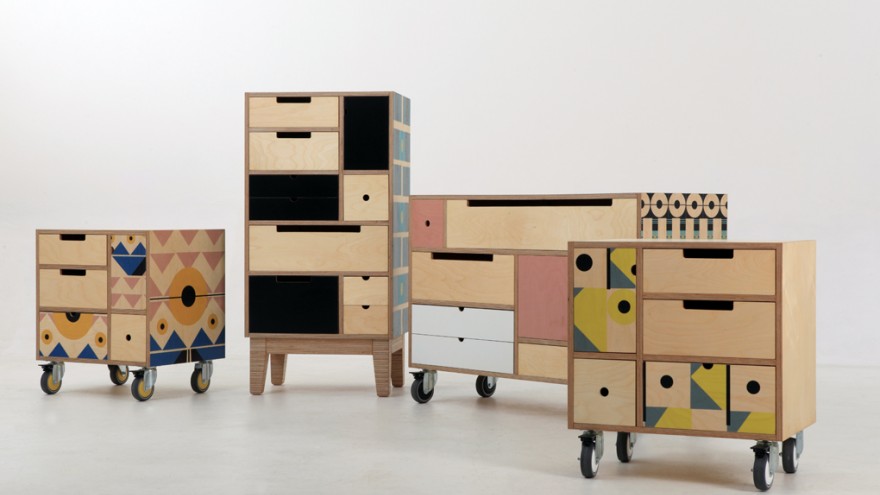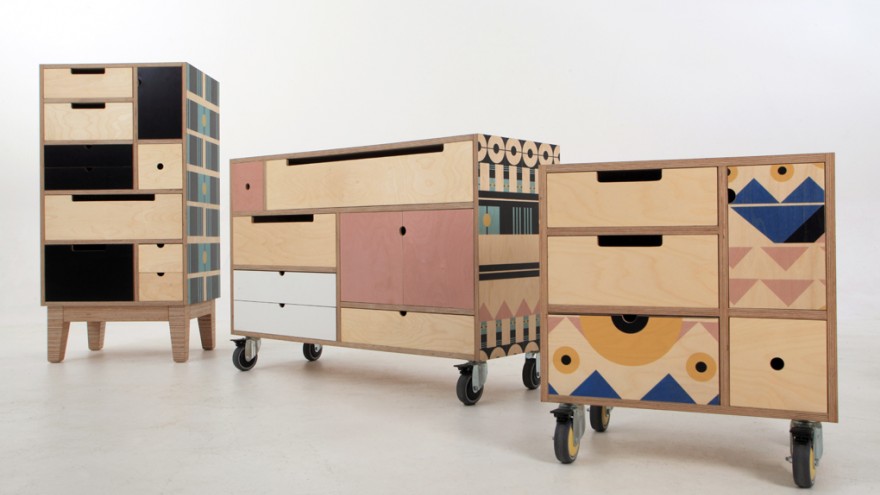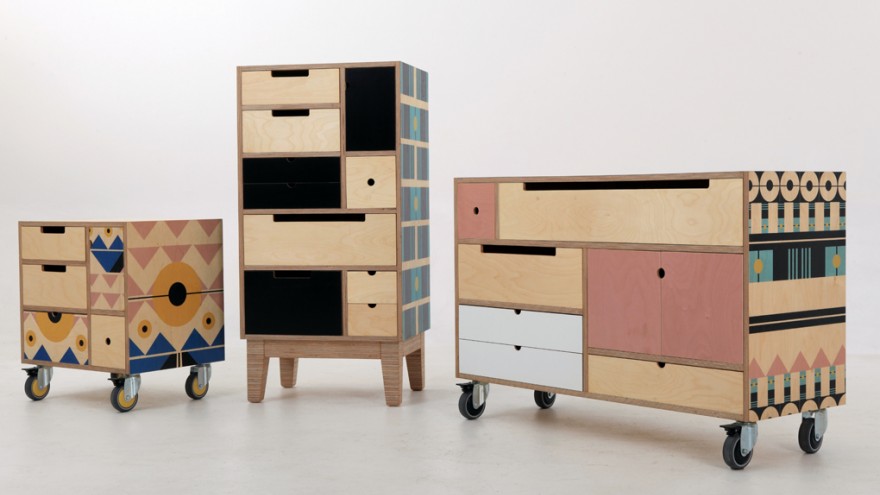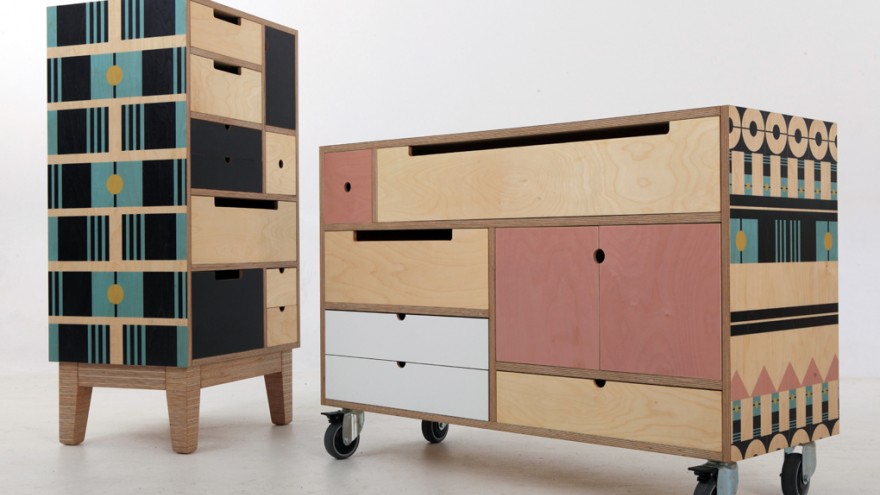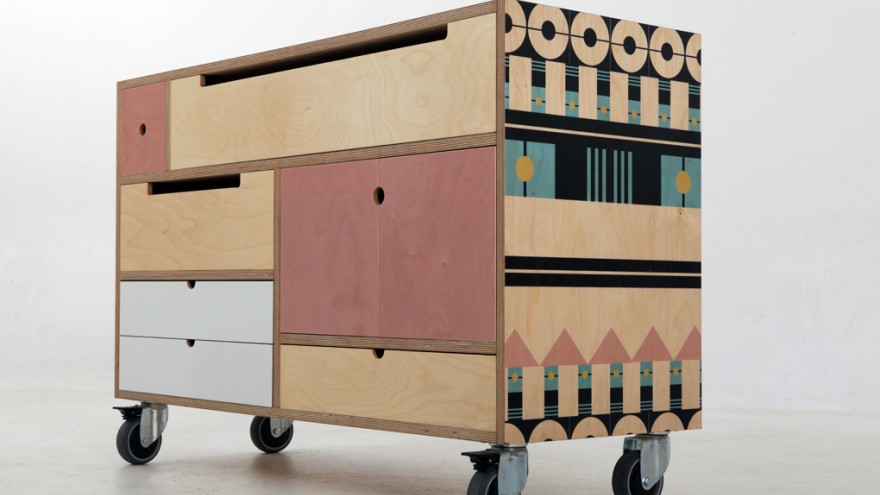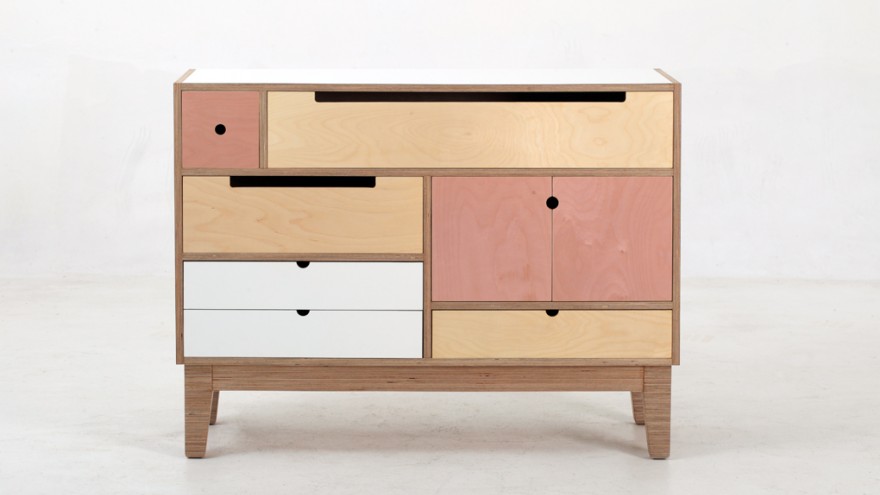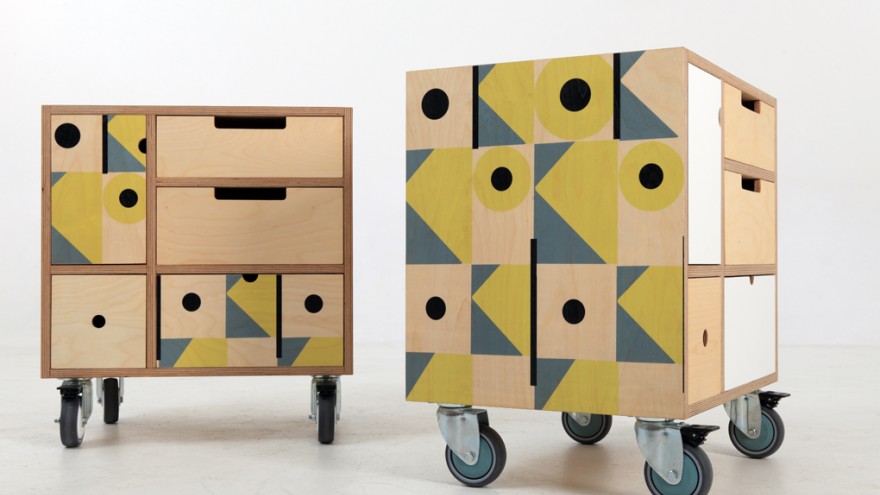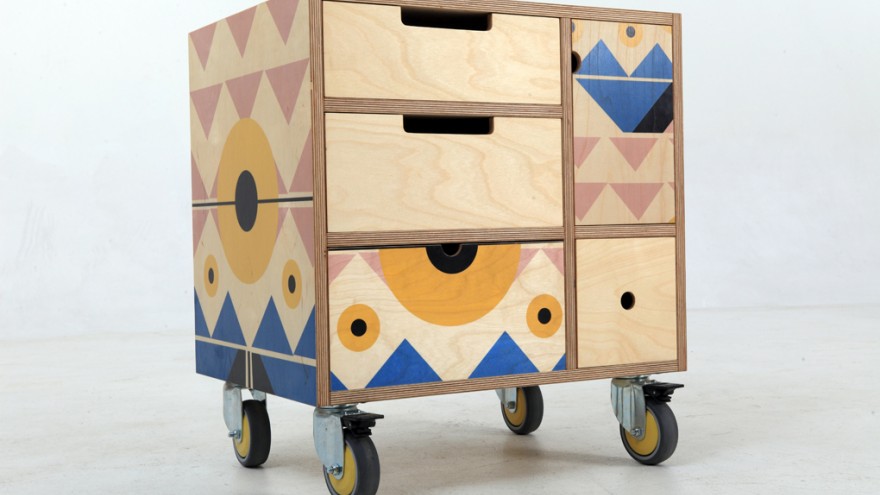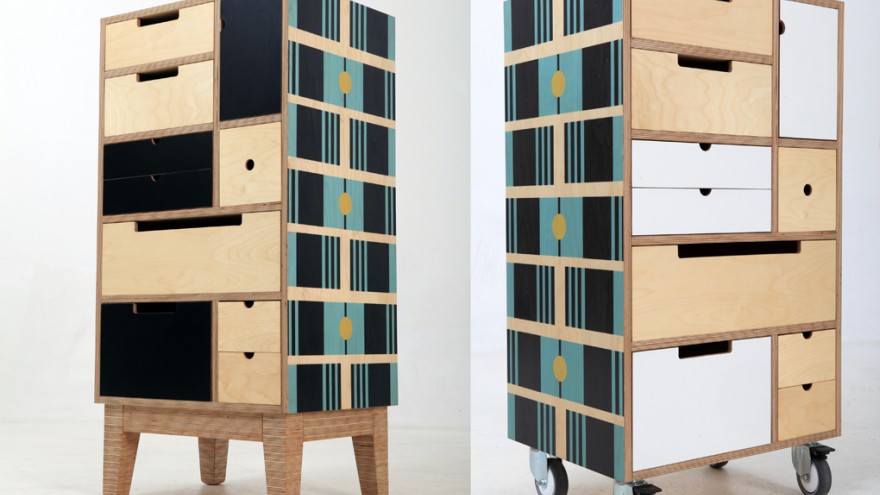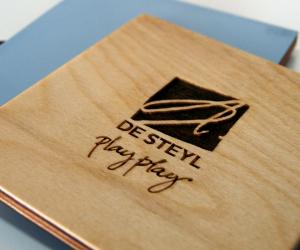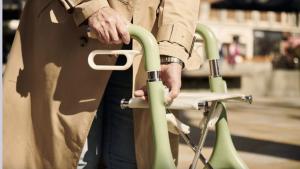From the Series
Deánne Viljoen, co-owner and CEO of De Steyl, bespoke furniture designers and manufacturers based in the Garden Route of South Africa, wanted to "dress up" the Play Play range of furniture that they launched in 2013 and decided to look for a South African artist or designer to collaborate with. She had been admiring Renée Rossouw's work for a while and when she launched her Liquorice – South African Candy 2014 pattern range, she knew it was the right kind of contemporary African pattern to apply to their plywood furniture. We chat to the pair about the collaboration:
What quality in the other partner’s work appealed to you?
Deánne: Renée’s work has a playfulness and quirkiness that makes me smile. Although it is seriously good and avant garde, it is incredibly easy to relate to and fall in love with. Her brilliant use of colour and scale is a perfect match for Play Play’s simple structure and it feels young, urban, African. It also appealed to me that we are both South African women architects who could simply enjoy ourselves while building something small together.
Renée: I admire De Steyl’s focus on quality. Their furniture is made really well – I would call them perfectionists. The Play Play range particularly appealed to me, as a collector of toys and Lego myself I immediately wanted a cabinet. There are all sorts of endearing qualities to this range, like super small little drawers or interchangeable legs. A lot of character! On top of that, the main reason why I wanted to work with Deánne and De Steyl is a page on their website which showcases the team and machinery behind the furniture created – it’s an honest attitude which I admire.
Where the pattern or pieces specifically designed for the collaboration or was it a fusion of the best of existing work?
Deánne: De Steyl launched Play Play Original on the WCFI stand at Design Indaba Expo 2013 and this year I wanted to explore the idea of “dressing it up” in a contemporary African pattern. Renée had just launched her Liquorice pattern on wallpaper and so it was a fusion of existing work that came together in a very short period of time. With the help of the Dutch CBI export-coaching programme, De Steyl also refined the technical specifications of the original Play Play range to make it lighter and less expensive, with greater functionality and aesthetic appeal. Renée gave expert art direction in the use and positioning of her patterns on the furniture panels.
How did you go about designing the collaborative pieces?
Deánne: We never actually met in person before the product launch at Design Indaba Expo 2014 and you could call it an online collaboration that started with a DM on Twitter! Renée had a look at our work and could also visualise her patterns on Play Play and we chose four patterns from her range to use with our chests. I started sending her graphic images of the patterns on the furniture, which we could discuss and modify, and Renée in turn sent me her interpretations and comments. De Steyl researched the technology available to print on wood and with the help of graphic designer Willem Viljoen collated all our visual ideas into the artwork for the Play Play Pattern range and had it printed. De Steyl then made the prototypes and we documented and shared the process with Renée until we were both very happy with the end result.
Do you always have certain applications in mind when you create the patterns?
Renée: I don't but I do imagine a few, but sometimes it’s better to let the public/process decide, answers you can now get via social media. It also becomes apparent in the process that certain patterns work better on certain objects/surfaces. At the moment I’m very interested in exploring different processes with a multitude of steps to make new art. My patterns are usually a step beyond the final artwork. At the same time, as Deánne mentioned earlier, as architects we are interested in how people use objects or space, for me it is a natural inclination to want to use these patterns on products and not keep them on paper only.
How are the patterns applied to the wood?
Deánne: It is printed directly onto the sized and finely sanded plywood panels using our own copyrighted artwork.
Can you tell us about the wood and finishes used for the range, also why you use it specifically?
Deánne: Our focus was to use environmentally friendly materials of superior quality and to design both the process and the product to suit our skills and make it a joy to manufacture by real people. We use BB grade Birch Plywood that is great quality and 100% Birch throughout. It is beautiful when sanded by hand, very stable and strong. It is also sustainable and renewable.
The high-pressure laminate is very durable, adds texture and colour as well as hygienic and easy to clean. The patterns are printed using water-based inks and we’ve chosen to let the wood grain show through in the pattern giving it a more subtle and natural look. The whole piece is sealed with a natural oil that generate a molecular reaction with the uppermost cellulose fibres of the wood to seal it. The VOC-free oil is eco-friendly and easy to apply.
How does it feel to see you patterns applied to various different mediums?
Renée: It is the best part to be able to envision people enjoying patterns in their everyday lives. When you look at other African countries like Ghana, patterns are used everywhere to express their culture, even in school clothes. Some of the work I do is trying to create a similar language of expression for contemporary South Africa, and I draw from local inspiration to try and achieve this.
Patterns also have an animate quality, which can really add dimension and fun to any space, in whichever form or size. It is truly fascinating to see how people use and enjoy it differently in their homes, almost like a personality reveal.
Did you learn anything from the collaboration?
Deánne: It is important to respect the visual identity of the other designer, without letting go of your own. I also learned that there is value in enjoying design and being enthusiastic about it. It honestly was more like playing than work.
Renée: I think Deánne and I share the same work ethic, which made it a really easy and fun project. We were both excited about every step of the process and back and forth ideas being shared. If I’ve learnt anything, it is to be able to enjoy the process and also let the work do the talking.
What was the response to the launch at Design Indaba Expo?
Deánne: The response was incredible and what I would call spontaneously positive. As people approached the pieces, they were already smiling and enjoyed touching the furniture, opening and closing drawers and doors. They also appreciated that the furniture was well designed, well made and of a quality finish and that the patterns added value and made it unique. We had great interest from overseas buyers and sold the entire stand and more at the Expo. We are currently responding to enquiries and producing orders with great excitement.

